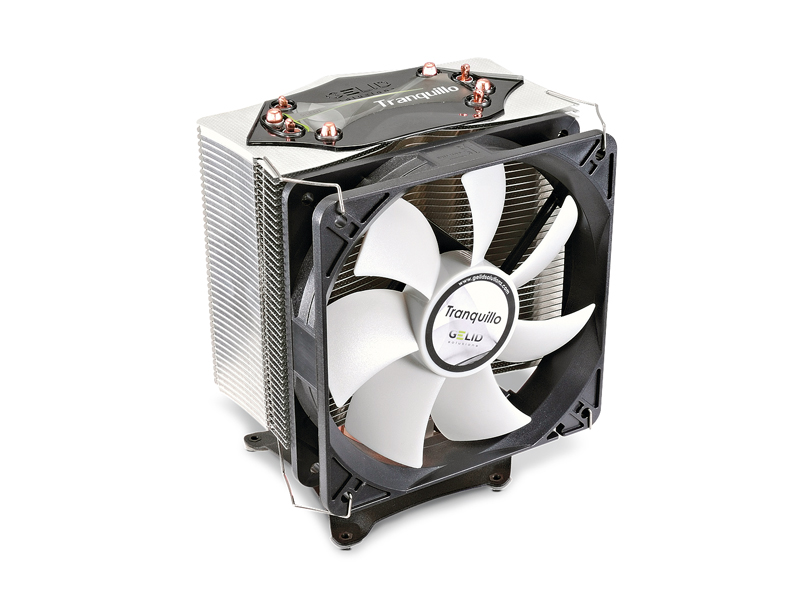How to overclock your Intel CPU
Get more performance from your Intel Core processor

Back in the days when the average desktop PC was barely capable of running a word processor, let alone sumptuous 3D games, the idea of overclocking your CPU in order to get thousand pound performance from a three hundred pound chip wasn't just an indulgence, it was a necessity.
A lot has changed. A modern multi-core CPU has a much longer shelf life than its forebears, because performance today is as much a factor of the number of cores and microcode as it is raw clockspeed.
An Intel Q6600 bought four years ago is unlikely to feel sluggish for most games, although upgrading isn't expensive these days either. For the not-unreasonable outlay of £150 you can pick up anything from the latest Lynnfield chips through to a six-core monster from AMD. But that's hardly the point.
Dropping £150 is still £150 out of your pocket, and the basics remain the same: Why buy a new or more expensive chip when you can save some serious dough and overclock? Besides, it's also a lot of fun.
The techniques involved in CPU overclocking have remained largely unchanged since the dark ages of computing too. Take control of the clocks, take care of the extra heating produced, and before you know it you'll be eyeing up the cost of liquid nitrogen.
It's true that most CPU architectures have a cap beyond which they simply won't perform – but the good news is that for current Intel processors, 4GHz or more is easily possible using air-cooling techniques alone.
Your CPU's clock speed is derived by taking the 'base clock': a signal supplied by the clock generator on the motherboard, and applying a 'multiplier' to it.
Get daily insight, inspiration and deals in your inbox
Sign up for breaking news, reviews, opinion, top tech deals, and more.
On newer P55 or X58-based motherboards, the base clock is always 133.33MHz by default; for Core 2 or older CPUs, the base clock varies between 100MHz and 166.6MHz depending on the Front Side Bus. The important thing to remember is that the CPU speed is defined by this external influence; it doesn't just operate from a single internal signal that only it has total control over.
Question of multipliers
If you are the owner of an 'Extreme Edition' chip or one of the new K-series models, then you can select what the multiplier will be. That means if you have a Core i7 980X running at 3.33GHz (133MHz base clock x25 multiplier) you can overclock it to 4GHz just by increasing the multiplier to 30.
If you don't have an unlocked chip (like the vast majority), the multiplier will be a fixed value or, in the case of the Core i7 and i5 CPUs we've seen, you'll have a restricted set of options in the BIOS to reduce the multiplier or apply a very small overclock. That means to do any serious acceleration of your CPU you'll need to increase the base clock itself, and that's where your choice of motherboard is all-important.
Essentially, you'll need to alter the base clock in the BIOS, something that most motherboards now offer as a matter of course. This same clock is used by the other buses in your machine though, including the PCI-e bus that your graphics card is sat on.
This means that those components need to be either well-cooled, so that they can run to keep up as the base clock is accelerated, or you'll need to be able to 'decouple' them in the BIOS and leave them running at their stock speeds regardless of the base clock setting.
We're going to be using an MSI P55-GD65 for our walkthrough. It's a solid board that sneaks in at less than £100 and opens up all the important BIOS settings for us. If you aren't confident fiddling around in the BIOS, it has extra buttons for increasing clockspeeds across the board or automatically finding a modest but stable overclock.
Which chip to choose?
To play around with Intel overclocking, any one of Intel's Core 2, Core i5 or Core i7 processors are a great place to start.
Arguably the best choice right now is the Core i7 920, a 2.66GHz chip that will crank up to a good 4GHz and has a triple channel memory controller to help the data flowing from the system RAM to keep up with it.
There are some drawbacks, though. For a start, you'll need an expensive X58-based mobo, as well as at least three sticks of RAM. More critically, the 920 has a locked memory multiplier, which means there's an extra level of fiddling with memory base speeds to keep your system stable.
Instead, we're using a Core i7 870 to show you how to get the most from an Intel-based system. The chip itself is quite pricey, but the accompanying socket-1156 mobos are reasonable and you can decouple the memory timings while finding the fastest stable speed for your processor.
The successor to the 870, the Core i7 870K, is the same chip but cheaper and with an unlocked CPU multiplier, which means it's even easier to overclock.
To achieve stability you'll need to balance the base clock, the multiplier and the amount of voltage supplied to the CPU and the QPI system interface. Every chip is different, and you may find a high base clock with a low multiplier works better than a low base clock and a high multiplier, or vice versa.
- 1
- 2
Current page: Overclock your Intel CPU: Introduction
Next Page Overclock your Intel CPU: Step by step